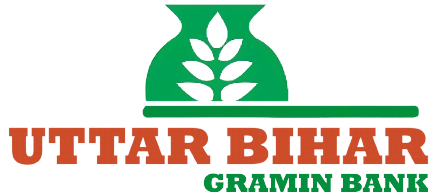Buying a car is often the most practical way to meet family and work needs in Bihar. A car loan from Bihar Gramin Bank can cover most of the purchase price for a new or nearly-new used vehicle. Below I explain what this loan typically finances, who can apply, the money involved, costs to expect, and common questions — with clear examples so you can judge if this is the right route for you.
What’s financed
New cars and used cars up to 3 years old for private, personal use are normally eligible. The bank finances the on-road price, which includes the vehicle cost, registration, and mandatory taxes. Accessories and extended warranties may be financed in some cases, but banks often finance only factory-fitted accessories. The bank will not finance vehicles bought for commercial use (taxis, goods transport) under a standard car-loan product because those carry higher business risk.
Who’s eligible
- Residents of Bihar with a valid local address. Rural banks usually require proof of residence in their service area.
- Age: Typically 18–70 years at loan maturity. Younger borrowers may need a co-applicant if nearing the upper limit.
- Employment: Salaried employees, pensioners, and self-employed (proprietors, partners) who can show steady income.
- Credit history: A clean repayment record helps. If you have blemishes, the bank may ask for a guarantor or higher margin.
Why this matters: the bank needs assurance you can pay monthly EMIs. Residency and income show local stability. Age limits reduce the repayment risk over long tenors.
Income criteria
There is no single national threshold. Banks assess income relative to the loan EMI. As a practical guide:
- Salaried borrowers often need a net monthly income that leaves room after existing EMIs. Banks may require that total EMIs do not exceed 40–50% of net monthly income.
- Self-employed applicants should show 1–2 years of business income and bank statements. The bank will use an assessed monthly income to check EMI affordability.
Example: If you want a loan with an EMI of ₹12,000, banks would typically expect your net monthly income to be around ₹30,000 or higher, depending on other liabilities. This ensures you can meet living costs and the EMI.
Loan quantum
The loan amount depends on the vehicle price and the margin requirement. Typical features:
- Minimum loan amount: often around ₹50,000.
- Maximum loan amount: depends on bank policy and applicant profile. Smaller rural banks commonly finance cars up to ₹10–15 lakh based on branch limits. High-value loans may need central approval.
Example: For a car with an on-road price of ₹6,00,000 and a 15% margin, the bank may finance 85% = ₹5,10,000. You would need to provide ₹90,000 as down payment.
Margin (new vs used)
- New cars: Margins often range 10–15%. That means the bank finances 85–90% of the on-road price. New cars depreciate slower initially, so banks accept a lower margin.
- Used cars (≤3 years): Margins are higher — typically 20–30%. The vehicle has already depreciated and carries more resale risk, so banks require a bigger borrower contribution.
Why margin matters: it protects the bank if the car must be repossessed and sold. A higher margin reduces the lender’s loan-to-value ratio and lowers risk.
Security & guarantor
- Primary security: Hypothecation of the vehicle. The bank’s lien is recorded in the registration certificate (RC). This allows repossession if EMIs stop.
- Additional security: For larger loans, banks may ask for third-party collateral or mortgage of property.
- Guarantor: Required if the borrower’s credit profile or income is weak. A guarantor with good credit can help secure better terms.
Why these measures exist: movable collateral (vehicle) can be sold, but sale value falls fast. Additional security and guarantors reduce potential loss to the bank.
Repayment windows
Typical tenors for car loans range from 1 to 7 years. Shorter tenors mean higher monthly payments but lower total interest. Longer tenors reduce the EMI burden but increase total interest and may raise the bank’s risk because older cars have low resale value.
Example: A ₹5 lakh loan at 10% p.a. over 5 years has a higher EMI than the same loan over 7 years, but the total interest paid is lower with the 5-year plan.
Interest rates
Rates vary by borrower profile and the bank’s cost of funds. Rural banks often price loans based on an internal benchmark or linked to RBI policy. Expect a competitive range roughly between around 9% to 14% per annum, depending on credit score, income, and whether the car is new or used.
Why rates vary: better credit and higher down payments reduce risk, so the bank can offer lower rates. Rate differences also reflect whether the loan is priced to cover administrative costs and expected defaults.
Processing charges
- Processing fees are usually a percentage of the loan or a fixed amount. Typical ranges: 0.25%–1% of loan amount or a fixed fee between ₹1,000–₹5,000.
- There may also be charges for documentation, verification, valuation, and legal fees if extra security is taken.
- Insurance (comprehensive motor insurance) is mandatory and adds to upfront cost. GAP insurance or extended warranties cost extra and are optional.
Ask the branch for a full cost sheet. Small percentage differences matter on larger loans.
FAQs
- Can I prepay or foreclose the loan? Most banks allow prepayment. For floating-rate loans, prepayment charges are often low or nil. For fixed-rate loans, banks may charge a fee. Check the loan agreement.
- How long does sanction take? Simple salaried cases with complete documents can be sanctioned in a few days. Self-employed cases may take longer due to document verification.
- Can I transfer my car loan from another bank? Yes, loan balance transfer is possible. If the new package lowers your overall interest or EMI, it can be worth the paperwork and nominal charges.
- What documents are needed? ID, address proof, income proof (salary slips/IT returns), bank statements, vehicle quotation, and RC for a used car. Guarantor KYC if required.
- Does the bank finance used cars bought privately? Many banks restrict used-car financing to dealer purchases so they can verify the vehicle condition and ownership chain. Private deals may need more checks or higher margin.
Final practical tips: get written quotes for interest rate and total cost. Ask for an amortization schedule so you see principal vs interest over time. Compare the effective interest rate including processing fees and insurance. And always confirm current rates and terms at your local Bihar Gramin Bank branch, since policies and limits can change.

Kritti Kumari is a banker and MBA graduate who writes about banking, finance, and customer-friendly services. She simplifies complex financial products into easy guides, helping readers understand Bihar Gramin Bank’s offerings and make smarter money decisions.

